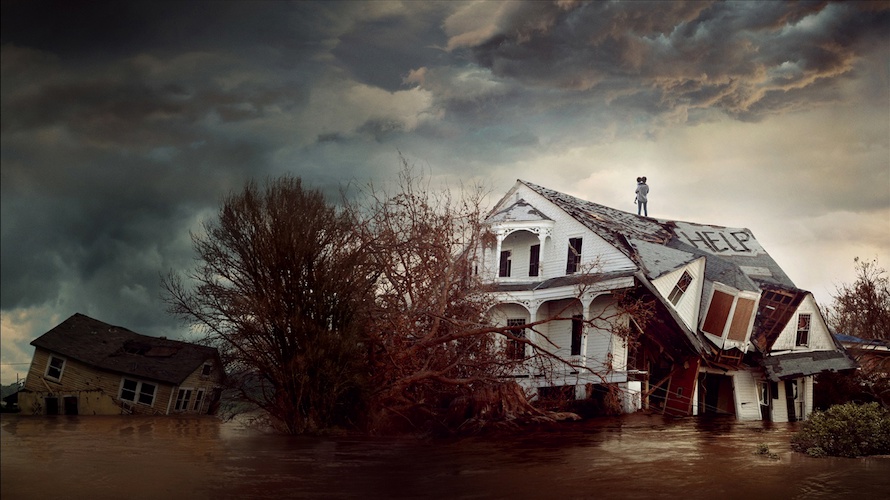Review: The Storm Itself is the Afterthought as National Geographic Takes a Deeper Dive Into the Real Tragedy with "Hurricane Katrina: Race Against Time"
Bookended by remarks commenting on the differences between a disaster and a tragedy, a new National Geographic documentary series, Hurricane Katrina: Race Against Time, puts a strong emphasis on the latter term in the events that unfolded in New Orleans prior to, during, and after the cataclysmic storm blew through the city.
Set to debut just ahead of the 20th anniversary of Hurricane Katrina, the series takes a look at the natural disaster, sure, but takes an even deeper dive into its aftermath, a man-made disaster that also shined a light on America’s deep, structural, racial divisions. To tell that story even better, Hurricane Katrina: Race Against Time comes from the Oscar and Emmy winning producers at Lightbox, acclaimed filmmaker Ryan Coogler and his production company, Proximity Media, and Oscar nominated Director, Traci A. Curry.
Opening with a montage of what we most commonly remember from the storm, we start by going back to the days ahead of the storm’s approach and get to know several key survivors whose personal stories we’ll follow through the series. We’ll also get to know some government officials, FEMA employees, and other key individuals in the unfolding of the tragedy that followed the storm.
There are five episodes to the series, starting with the storm itself, followed by the floods caused by the levee breaches, the failed organizations of rescue attempts, the media blowout that put attention and military efforts in all the wrong places, and the uncertainty after the waters receded and how the city has changed months, years, and decades later.
It’s really hard to retell the story of a major historical event we’ve known about and revisited in so many various ways over two decades. It's even harder to do so in a way that finds each episode ending with a cliffhanger-style panache that demands the hitting of a “start next episode" button. Yet, somehow, this series does exactly that.
Whether it was the first episode ending with the storm passing, yet a quick glimpse of water gushing through a broken levee to end on, or news media hyping up a non-existent story that scares rescue efforts away, each chapter ends with a cinematic quality that will have viewers chomping at the bit for the next chapter.
A large part of this is because those who may think they know everything about the event will still learn things about the aftermath that turned the disaster into a tragedy - decisions made behind closed doors, media showing off one part of the city that was largely unaffected, and of course, why you can’t interrupt a FEMA official’s dinner time.
While a large portion of the series puts the blatant and underlying racism of government officials into the spotlight, we also touch upon climate change and man-made environmental concerns that made the situation so much worse with wetland destruction, poor levee construction, and more.
The series features tons upon tons of archival footage, only about 5% of which is familiar news footage we’ve seen a number of times before. This footage also includes archival footage from earlier storms that show how New Orleans should have been better prepared for another storm to blow through, even commenting on lessons learned (and largely ignored) during a research simulation of a similar event only a year prior.
Everything is so wonderfully and dramatically told and chronicled through the series, You’ll get largely involved in the personal stories of survival and those involved, with one General helping the rescue efforts stealing most of the show. The only distracting thought I had during the program was “I wish I knew how New Orleans was laid out better." Yes, there are maps shown throughout, sometimes with beautifully animated graphics showing where water would flow, but only in later chapters of the series do we get moments that go deeper into the geography and socioeconomics of key locations in the city, helping it all make sense to someone unfamiliar with the city perhaps too late into the stories being told.
While many documentaries, local news specials, and even YouTube videos can tell you all about the events of this historical event, none do so as eloquently and beautifully as this series does. Getting you emotionally attached to the survivors, gasping at things officials have said, and learning largely untold things about the event make it truly captivating. Most importantly, the series shows the bigger controversies of injustice that prove the storm was more than just a landmark weather event, and shines a spotlight on what made the event truly tragic. 4.5 out of 5.
Hurricane Katrina: Race Against Time, premieres July 27th at 8/7c on National Geographic with three back-to-back episodes. All episodes will be available to stream July 28th on Disney+ and Hulu.





